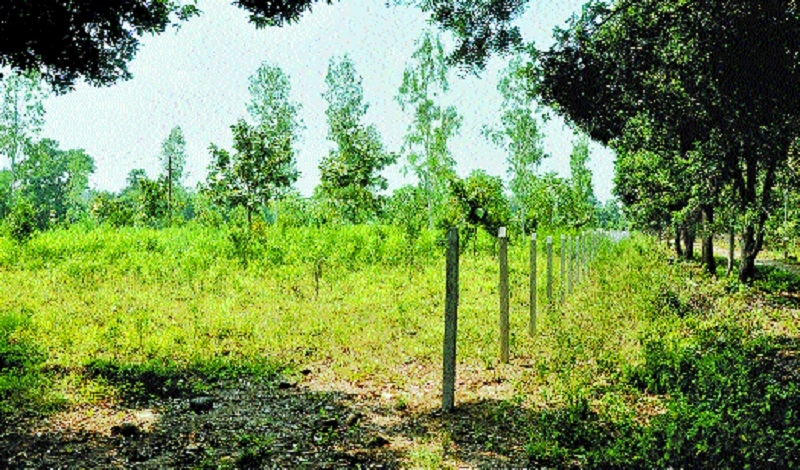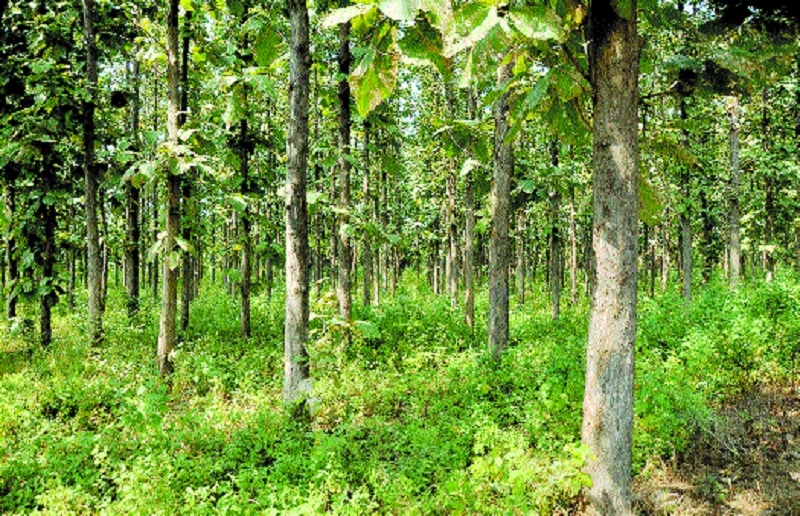‘Multi-purpose agroforestry model can change economic scenario of farmers’
| Date :18-Oct-2019 |

By Ramesh Marulkar :
Agroforestry models developed by College of Agriculture run by Dr Panjabrao Deshmukh Krishi Vidyapeeth at its agroforestry research farm (Futala farm) can come to the rescue of farmers and change their economic picture, if adopted. Known as the multi-purpose agroforestry model, the college made research and developed models like timber species-crop, oilseed crop-green manuring, bamboo based crop, eucalyptus-crop, horticulture-silviculture etc on the agrciutlure land spread in 400 acres of land adjoining National Bureau of Soil Survey & Land Use Planning on Amravati Road. Under the horticulture-silviculture model, agriculture crop is taken in the orange orchard.

Around 270 orange trees are grown in one hectare plus similar number of conal eucaplytus, teak or Maharukh and tur crop is harvested in it. A farmer can get three poles from one tree of ecauplytus, that means 810 poles from 270 trees. Consdering the cost of one pole at Rs 100 the grower can fetch Rs 81,000 from all the trees in three years. Moreover, he also gets oranges and regular crop, bringing him additional income. At present, some farmers in Achalpur are adopting this model but it is yet to become popular in absence of proper publicity. Another model is on growing treak trees in a row with a distance of 25 ft x15 ft and taking Soyabean, Sesame, Balck Gram, Green Gram and Termaric crops in the gaps. One teak can give eight to ten cu feet timber plus ten quintals of fuelwood in 15 years. According to reough estimate, one teak tree can give Rs 22,500 after 15 years.
This model is successful in Nagpur, Wardha and Yavatmal districts. There is also teak seed production area in one ha of land for growing tissue culture plants to get improved quality of seeds. This was disclosed by Dr V M Ilorkar, Senior Scientist and Project head, College of Agriculture, Nagpur, while explaining different models at the research farm on Thursday. He said that the teak-crop model was just like insurance cover to farmers because he can use the substantial amount from teak trees for education, marriage or other important purpose in the future. Farmers need not think of committing suicide if they adop these models that ensure income in short and long period.
In one of the demonstration plots spread in one-and-a-half acres, seasonal vegetables like cowpea are grown in the space surrounded with fruit-bearing and timber trees. Yet in another plot, the college has developed a model of oilseed crop plus green/organic manuring crop like Hemp and Dhencha, Dr Ilorkar pointed out. The college creates awareness through meetings, exhibitions, radio talks, TV shows, visits to farm. He wants that since these are forstry models Forest Department and Social Forstry Department should make publicity on the technology developed to popularise the mdoels. The college has also developed a hi-tech nursery to raise plants of teak, neem, Malabar neem, sandalwood and 20 species of bamoo. The area is rich in biodiversity with lush green vetegation, peacocks, deer wild boars and 120 species of birds. The college has no plans to promote the area as agro-tourism spot as it does not fit in rules and land is allotted for research/education purpose, Dr Ilorkar added.
